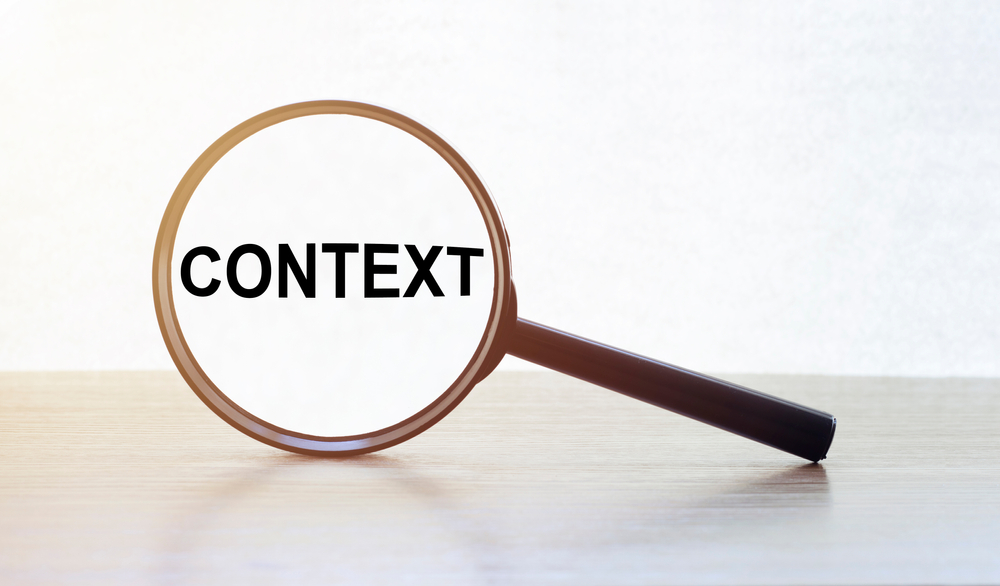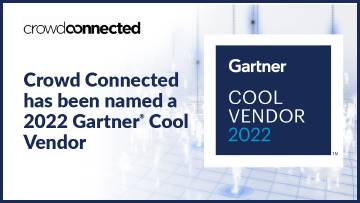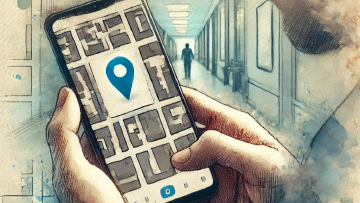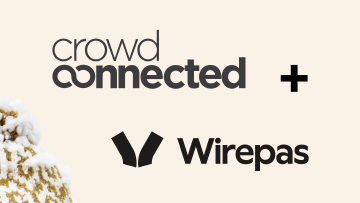Location Data: the Where, the Who, the What and the Why!

Location Data: Understanding the Where, the Who, the What and the Why!
In 2022, there are estimated 6.64 billion smartphone users in the world, which means 83.72% of people have a smartphone. 94% carry their phone with them “frequently” and 82% say they “never or rarely turn their phones off” (1,2).
Thanks to these adoption rates and the utility the mobile app ecosystem provides to end users, smartphone usage is saturated and ubiquitous. As a result, smartphones have the potential to deliver a significant amount of location data at an individual level and also aggregate group or crowd location data.
To find out more about how location data is being used in the real world by real people, we asked Crowd Connected’s CEO, James Cobb to tell us more.
What is the difference between ‘individual’ and ‘aggregate’ location data?
If we pinpoint someone’s individual location within a building, it doesn’t have much use on its own. But if we aggregate that data, we can estimate footfall and go some way to counting people as a group and draw some conclusions.
On the individual side, we can look at repeat visitor behaviour of each person visiting the site. Such as, is this someone’s first trip this month? Or how long since their last visit? Or we can look at where they came from, where they went to, and if there’s some element of flow. So people who come to a meeting room, have they come from reception or from the café? Which way did they come and then where are they going next?
We could enrich a CRM record about a customer to note that they’ve now made three visits, or it’s a month since their last visit or they came from somewhere else. And we could use that to target that person with some marketing, or we can aggregate it up to make some assumptions on the persona of the visitor.

With aggregate, we’re saying: what’s the average number of visits per month, or what’s the average time since the last visit or on average, where do most people come from and go to? And this really helps you understand how your visitors in general are utilizing the space.
Why is it important to collate location data?
It’s all about context. If you don’t understand somebody’s context, you can’t really communicate with them effectively. If you do understand the context, you can help to answer questions they may have. Almost any communication without knowing the context, would be completely misunderstood.
For example if someone types ‘Chinese food’ into Google, there’s not much context. That person might be standing in the middle of Tesco, probably looking to cook a meal or to buy specific ingredients. But if they are standing on the high street and it’s 8pm they are probably looking for a restaurant or take away - a quick fix as they must be feeling hungry. If they are standing in a branch of Waterstones, they are probably looking for a recipe book of Chinese food, so they have more time on their hands. But we wouldn’t know that from their search term.
If you don’t understand what someone wants, you can’t give them the right information or in marketing terms, you can’t make them the right offer that’s going to resonate. Location on its own doesn’t actually tell us what the question means, but it gives us a very good clue (perhaps the most important clue) as to what the user means, what they’re really interested in, what they’re trying to do and what you should give them.

With digital communication, e.g. websites, search, Google Maps but also app push notifications, if you don’t understand whether someone wants to find a nearby restaurant or is buying ingredients or wants to find a book, then how are you going to send them the right offer or information, notification, to fulfil their need? Quick answer: you’re probably not.
So with the right context and location data, we can find out where people are, for insight or better communication - or ideally both. It’s a powerful combination.
Is location data purely for commercial use?
Partly location data is about sending an offer, e.g. a discount from a book or restaurant. But sometimes it’s more about providing useful services. So Google, for example, has recently started providing every location for searches, contextual search results and map results. But that wasn’t always the case. And Google Search and Google Maps are more valuable if they return you results that are relevant to your location. And that’s not because Google wants to send you a voucher or discount code for a book or coffee, it’s because Google is trying to provide the very best service.
So with location data, we can create better apps, websites and messages. Not only sell to that individual, but to offer them a much better service through personalized recommendations and superior customer communication. And we can do that even better if we understand their context.

The thing about location data, is that it never actually tells us. It helps us guess at what the question really means or what the person’s really interested in or what they’re doing. So if someone’s in a bookstore, they’re likely to be shopping for books. And therefore information about books is going to be highly relevant but we wouldn’t know that for sure. We don’t absolutely know just because we have a dot on a map in a bookstore, that person wants to buy a book. Maybe they want a coffee, maybe toys, maybe they took a wrong turn. Perhaps there’s a café on floor three and they’re on the escalator and they’re just passing through.
And that’s another issue. People may be passing through instead of standing still and engaging. They may have been standing outside your shop, but facing the other way and talking to someone. However, if we know where they are, how long they spent there, where they came from and where they went to and how many times they have visited (ie their location data), we can start to understand the patterns of movement which helps to determine their activity and interests.
In combination this is the science and art of location analytics.
How do brands use location analytics?
Let’s say we want to communicate with people who are into books. It’s psychographic data as well as demographic data that would really help you to do that. But we don’t always have that information, i.e. we can’t target people in Waterstones and we don’t know about the person and what they’re doing and why they’re doing it. So we just target, say, all 18 to 24 year olds. Which is almost certainly expensively wasteful and time consuming. The communication is irrelevant and irritating to 99.9% of the audience.
Their location data however, goes a little further to understanding their activities. At Crowd Connected HQ, we frequently use the term spatio-temporal’ which means ‘a place in time’. So understanding where someone was at a certain time can be helpful. E.g. they were in Waterstones during opening hours for half an hour so they’re probably shopping for books. We can make a guess from the where (and the where not), and we can start hinting at repeating patterns of behavior and understanding what drives the person and target segment persona.

And if we start getting from the ‘where’ and ‘when’ to ‘what’ and even ‘why’ they were doing it and what they might do next, that starts taking us into psychographic information about the customer and not just demographic. Which is way more useful. Do we target our ad for books at 18 to 24 year olds, or do we target it to those who have been seen in Waterstones in the last month?
And that’s what’s so great about location data. We can target those people who have been seen on floors one, two, and three of Waterstones for at least 30 minutes. It’s more targeted advertising, using location and psychographic data to understand and engage your target persona, which is more likely to get results, and will be a lot less annoying and less expensive to execute.
Now we can be more confident about what these individuals were doing, because we’ve now excluded those just visiting the café and people merely passing through, using a rule that they had to have been in Waterstones for 30 minutes or more. Plus, we’ve also seen them near the till, so we can assume they have bought something too. So we know that someone bought a book but can we start getting to know why they’re behaving like that? Let’s dig deeper. Which book departments did they visit? So now we know they’re interested in History and they’re not interested in Fiction. And we know when they came next time, they only visited the Biography department, but still haven’t visited Fiction.
If you build up enough of this behavioural data, you can start predicting what they’re going to do next time. If you can start predicting where someone’s going to be next time, then that’s when you’re starting to get at the why and the psychographic data. As in, I don’t just understand what they did today but what motivated them and what they might do tomorrow. Maybe this helps us sell more of the right things to them but it also enables us to deliver better services, so it’s a win: win. We can give the customer a much better brand experience.
Which sectors should look at location data and analytics?
Any business or venue that is offering a real life experience should look at location data. Early adopters have been hospitals, airports, warehousing and university campuses. Often to aid wayfinding or to keep track of high value items. But sectors such as retail, entertainment, tourism and smart cities can go a long way to improving the customer experience by understanding location data.
These businesses have an onslaught of competition from digital channels. Digital competitors to retail stores (online shopping) and entertainment venues (live streaming) currently have a lot more data than their real-world counterparts, which helps them know their customer, sell better and steal market share. These physical businesses need to be capturing location data and feeding insights into their marketing and wider business operations in order to compete and deliver a personalized experience. The sort of experience that we are all so familiar with online.

Digital businesses know which behaviours lead to a purchase. If someone abandons their shopping cart, you can send them an email reminding them to check out. Can you say the same for your real-life business? The only way to compete against digital is a deep understanding of your customer, which includes where they go, where they’ve been, if they return and how long they stay.
If you work in a company that provides a real-world experience, I bet you have Google analytics for your website. But do you have the same level of data for your real-world customers? You should start by looking into location data via mobile apps.
About Crowd Connected
Crowd Connected provides a complete all-in-one solution for indoor positioning, location data & analytics and customer engagement that’s price efficient, easily integrated and privacy enabled. Our positioning engine continually adapts to the changing environment so it always works. It’s simple and quick to implement and can therefore be delivered at a low cost. Register for a free account and start testing our platform within a couple of hours.
Sources:


